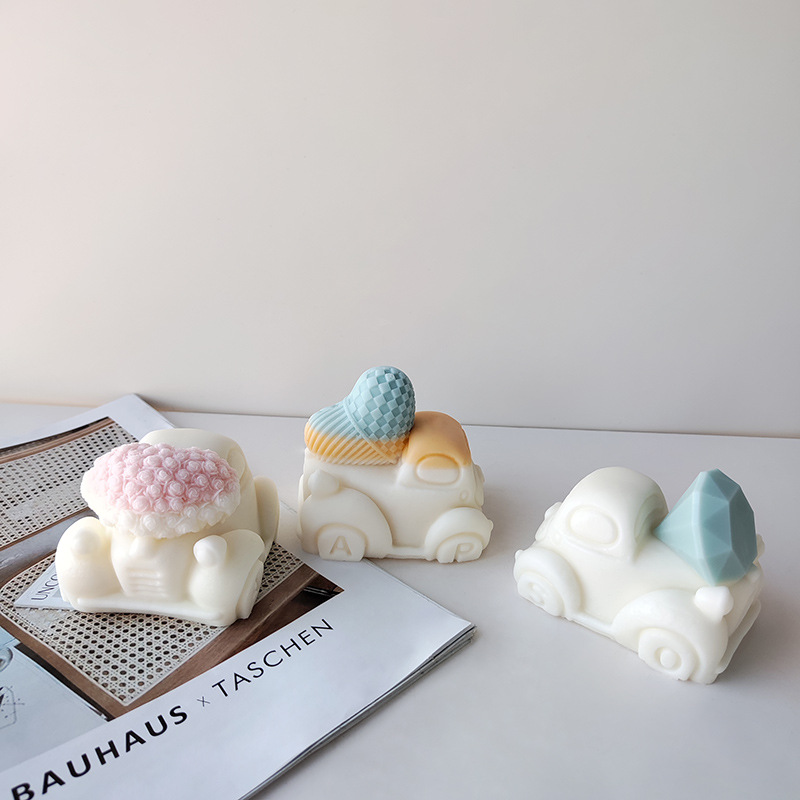Hearing is one of our most precious senses, and yet many take their hearing for granted, exposing themselves to loud noises that do lasting damage. [Jonathan Levi] of The Next Level does no such thing, at least not anymore. He’s even gone so far as to have custom acrylic earplugs made, which he carried around for two years, finally had them tweaked to be perfect, and promptly lost them. Rather than shell out another $150-$200 for another pair, [Jonathan] decided to see if he could make some himself.
While it’s true that [Jonathan] got a head start by asking the earplug company for the STLs they created back when he was fitted, he goes through the ways that one could mold and then scan one’s ears at home for not a lot of money. There are even kits for squirting that quick-setting goo into your ear to get just the right shape. Once you’ve got the ear canal positives, some quick photogrammetry work with your phone camera and a lazy Susan should be enough to get a model going in Blender. Candle Molds Silicone Diy

[Jonathan] had the good sense to label left and right on the 3D printed mold, and furthermore added some small 3D printed screws that are color-coded to help him keep them plugs straight, and give him something to grab on to when it’s time to take them out. Be sure to check out the build video after the break.
I’ve only ever used soft earplugs, are acrylic or 3d printed ones comfortable?
Generally the custom ear plugs are for little kids prone to ear infections at the pool.
I doubt these provide as good noise attenuation as cheap disposable ear plugs. Personally I’m suspenders and a belt and use soft ear plugs and ear muffs when shooting big rounds…just plugs for concerts.
Custom ear plugs are seen everywhere in the music industry, from studio to stage, in the form of in-ear monitors (headphones). While no, they don’t provide quite as good a reduction rating as dedicated plugs (without speakers in them) they are certainly the current ‘best of both worlds’ when it comes to keeping the stage volume down for themselves and those around them while still being able to get a usable monitor mix anywhere on stage.
Exactly, I double up when shooting also!
A long time ago I covered by ear in olive oil and squirted RTV silicone into it to make a custom ear mold. The result was ugly but functional, and the pain endured due to both all the ear hairs getting ripped out and then the blistering contact dermatitis caused by the acetic acid during curing, made me feel like I had really achieved something…
Next time use a release agent that does not interfere with curing to prevent the silicone from pulling ear hairs out and don’t use a moisture curing 1 part silicone either!
There is also acid-free curing RTV silicone for delicate materials like marble.
Could you just put it in a balloon or condom and maintain some pressure until it cures, then peel away the latex after?
Precisely. I thougt “cling wrap” while reading the OP (thinner and not requiring pressure like latex or rubber)
My roommate once asked me to silicone EL wire to his face and arms for Halloween. It seemed like a bad idea to use RTV, but what are roommates for! He had red skin for a good week or so.
I don’t understand. Inexpensive foam earplugs conform to my ear channel just fine and give 25 to 30 dB attenuation. If you’re not worried about the space they take up you can put on the earmuff style protectors ($20 to $30) as well and get an additional 30 dB or so attenuation. Anything loud enough to cause problems after 60 dB of attenuation is probably too dangerous to be around for other reasons. The foam plugs are too cheap to worry about losing, and the earmuffs are too large to lose unless you’re trying.
You won’t get anywhere near 60 dB of attenuation by wearing earplugs and earmuffs. I think OSHA only allows 5 dB of additional attenuation by doubling up, but you might get a few more dB in reality. I think the reason you can’t simply add dB of attenuation has to do with sound transmission through bone.
It might not be 60dB combined but it is FAR greater than an additional 5 db. I’ve done it in my workshop. I’m a ham radio operator and used to estimating differences in signal strength, and my guess is that ear muffs on top of the foam plugs adds at least 20 db. In any case, I think spending hundreds of dollars on acrylic plugs is crazy.
Yes, the 5-dB rule of thumb OSHA uses is conservative. The actual total attenuation will vary depending on the individual and the specific combination of earplugs and earmuffs used. The data at the link below illustrates this well.
https://www.researchgate.net/publication/299784651_Double_Hearing_Protection_5_dB_or_Not_to_be
good quality foam earplugs get expensive quickly, are too much faf to put in to actually do it every time you need, and for my ears at least, they either get really annoying or work themselves out within half an hour. also, no audiobooks once those are in. Earmuffs cover up my blood-to-air heat exchangers.
the custom fit hard ones are way, way, way more comfortable, easier to put in, don’t work themselves loose, the tiny orifice things really work at letting speech through, can be out and back in within 5 seconds, and actually dampen as much as they say they do. in combination with the bone conducting headphones which are now a semi-permanent feature on my noggin, they make for something that is cheap at 5 times the price, even though that price was quite high to begin with.
seriously, even for occasional use like lawn mowing, get yourself some of these. they can be had for about €100 now. the only thing is that you have to clean them once in a while, and they can be lost quite easily (protip, buy them in whatever the opposite is of the floor colour you use them at. my shop floor is blue, so i have orange ones).
I used to get them for my employer, and was cheap enough for long enough to get myself a fun case of tinnitus. Never Again.
You don’t add decibels like that. I assume the attenuation is for sound power, in which case 30 dB of attenuation plus another 30 dB gives you “only” 33 dB of attenuation. If it was not for power but for sound pressure, then the result is 36 dB. Still very far from the 60 dB you were talking…
That isn’t even close to being true and I can’t imagine where you got that idea. Decibels absolutely do add … it’s the very definition of the ratio of power. If I have an attenuator that drops 100 volts to 10 volts I have 20 dB of power attenuation. If I have a second attenuator that drops 10 volts to 1 volt I have 20 dB of power attenuation. If I cascade them I have 40 dB of total attenuation. If I have an attenuator that drops 100 volts to 1 volt I have 40 dB of attenuation. The two situations are identical.
“He’s even gone so far as to have custom acrylic earplugs made, which he carried around for two years”
Are you sure the best custom earplugs are custom acrylic? Acrylic isn’t exactly a soft material, even if it is custom made and there are plenty of other materials that can be both soft and noise reducing. Acrylic isn’t a bad material though there are plenty of food or medical grade silicones. Not sure if there are medical grade acrylics, let alone food grade? It’s going in your ears and meant to stay there for hours at a time after all.
Most custom acrylic earplugs are actually filled with silicone for actual noise reduction. Not an expert here but are there not custom silicone earplugs out there?
>Not sure if there are medical grade acrylics, let alone food grade? let alone food grade? medical grade would be HIGHER purity than food grade. Next time your granny is smiling at you, enjoy your view of medical grade PMMA. From dentures, to hearing aids, to prosthetic eyeballs, Acrylics an AWESOME choice.
all that said….silicone WOULD have been a better choice.
Obviously medical grade is higher purity than food grade. Medical grade silicone would be a better, softer choice. Both can be USP Class VI. Only one is anything from slightly soft to very soft though.
Is there a commercial market for custom medical grade silicone earplugs?
Seems very complicated. Years ago, I got some custom silicone ones made for shooting. Mix the two parts, squirt in the ear, and leave to set, tidy with a knife. Nice and comfortable and very effective cost about £30.
I´ve had custom silicone earplugs made a few years ago. Way better than the foam ones. They put zero pressure on my ear when seated correctly, but block a lot more noise.
You’re gonna need a killer photogrammetry app to replicate something so small with so much detail – especially if the earplugs aren’t going to be soft
Uhm, if you have the shape can’t you then make a damn mold the old way instead of photogrammetry and blender and 3D printing? Seems to me a fanatic need to use 3D printers more than anything else.
>Seems to me a fanatic need to use 3D printers more than anything else.
when the only tool you know is a hammer, Everything looks like a nail.
There’s some merit to being able to reproduce the same part in the future without having to store molds.
I once made a pair from polycaprolactone. Put a bit into hot water and let it melt, then stick the blob in your ear. They worked reasonably well but were a bit ugly. It would be easy to improve upon that with a bit of practice though.
I used cling-film and Sugru. I also made earbuds the same way. Both sets work really well!
There are also these wax earplugs, shape them, insert, take out, make silicone mould and cast them from a variety of materials. Maybe insert a string to hang them around your neck
I recently printed some using old CT data, not a perfect fit, in the scan I had my mouth closed so the result was not quite the right shape, gonna try adjusting them a little bit and trying again, it is only a couple cents of resin for a shell print.
Please be kind and respectful to help make the comments section excellent. (Comment Policy)
This site uses Akismet to reduce spam. Learn how your comment data is processed.

Nake Bodi Mold By using our website and services, you expressly agree to the placement of our performance, functionality and advertising cookies. Learn more